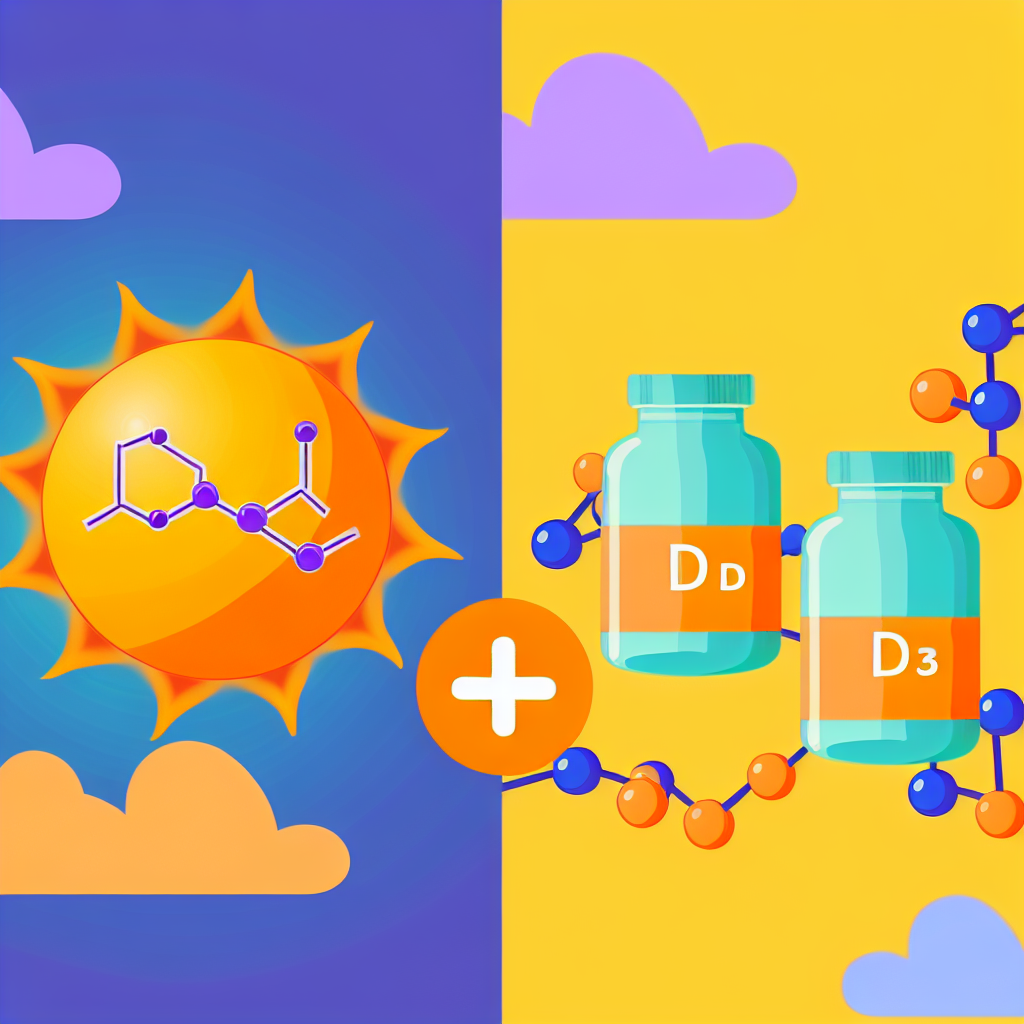Vitamin D is an essential nutrient for bone health and immune system function. It can be obtained through sunlight, food, and supplements.
The WHI clinical trial randomized postmenopausal women to take 10 mcg/day of vitamin D and calcium or placebo daily for a median of 7 years. It found no effect on cancer incidence or mortality during a long-term median follow-up of 22.3 years [94]. The benefits of supplementation remain unclear.
Vitamin D Basics
Vitamin D helps regulate calcium and phosphorous, which keep bones healthy. It also aids in the absorption of other nutrients such as magnesium and zinc. It may also lower blood sugar and help maintain a healthy weight, although research on this is mixed.
From late March/early April through September, most people can get all the vitamin D they need by exposing their skin to sunlight (but remember to use sunscreen and avoid prolonged sun exposure to reduce the risk of cancer and aging skin). The rest of the year, it is necessary to supplement with vitamin D from foods or dietary supplements. A few foods naturally contain vitamin D and many are fortified with it. Vitamin D is fat soluble and therefore better absorbed with food. It comes in two forms: D2 (ergocalciferol) and D3 (cholecalciferol).
A common recommendation is for adults to take 600 IU of vitamin D per day. Children should take a lower dose of about 200 IU daily and infants even less. Some people may need to take higher doses, and doctors can work with patients to determine how much is needed. The RDA is based on the amount of vitamin D that keeps serum 25(OH)D levels in the range that support bone health and normal calcium metabolism.
D3 Explained
Vitamin D is a fat-soluble vitamin that regulates calcium homeostasis and is vital for bone health. It is synthesized in our skin from 7-dehydrocholesterol upon exposure to ultraviolet B (UVB) radiation from sunlight. We also get it from some foods, including dairy products and fortified foods, and in supplements.
Vitamin D deficiency is common. It can cause bone-related problems, such as rickets in children (a condition that results in soft and distorted bones). Other symptoms of vitamin D deficiency include weak muscles, muscle spasms, weakened immune system, and achy bones and joints.
The amount of vitamin D you need depends on your age and the color of your skin. Darker-skinned people can have more trouble making vitamin D from sunlight than those with lighter-skinned skin. Older adults tend to have lower vitamin D levels than younger adults because their skin's ability to make vitamin D decreases with age. They also may spend more time indoors than outdoors and eat less fortified food.
Some research has linked low serum vitamin D levels to an increased risk of heart disease. However, the evidence is inconsistent. One meta-analysis of 46 clinical trials that involved 4,541 participants found that taking vitamin D supplements of up to 40 mcg (
Key Differences
Vitamin D isn’t just one vitamin; it’s actually a family of nutrients. The two most common forms in your diet are vitamin D2 and D3. Vitamin D2 is made by plants, while vitamin D3 is derived from animal sources or sunlight. Both types can help replenish vitamin D levels in your blood and both can be used to prevent and treat rickets, osteoporosis, and other bone conditions.
Vitamins D2 and D3 have different molecular structures, but they are both absorbed well in your small intestine. In fact, the human body is able to make vitamin D2 and D3 from the same precursors. Both can increase vitamin D levels in your blood, but vitamin D3 may do so more effectively.
Vitamin D3 is found in foods such as fatty fish, eggs, and liver. It’s also available in fortified foods and as a dietary supplement. Research suggests that it’s more effective than vitamin D2 at raising the active form of vitamin D (25-hydroxyvitamin D, or calcifediol) in your blood. In a clinical trial, patients taking vitamin D3 once a week for five weeks saw higher calcifediol levels than those who took vitamin D2 once per day. (7)
